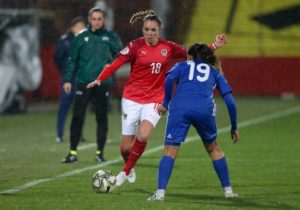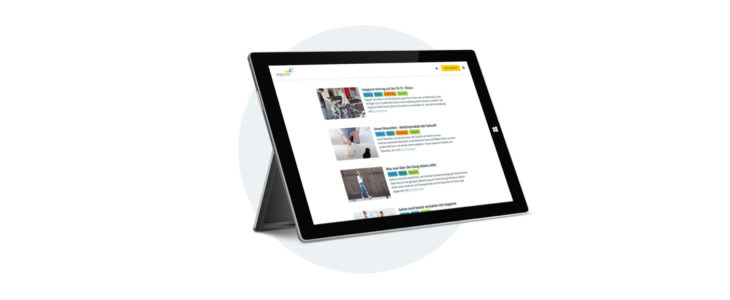Professional soccer player Julia Hickelsberger uses stapp one for therapy training

Especially in professional sports, injuries are particularly feared. A serious injury means not only pain and uncertainty, but also has a significant impact on an athlete’s life. In such cases a quick comeback is usually the ultimate goal and here motivation is a decisive factor. After her severe knee injury the Austrian women’s national soccer player Julia Hickelsberger was treated with mobilization under partial weight-bearing using stapp one and soon after was able to achieve huge therapy successes.
A professional athlete’s biggest fear became reality for her: Julia Hickelsberger seriously injured her knee during a European Championship qualifying tournament in september 2020. The result was a knee ligament surgery followed by intensive rehabilitation. Her supervising physiotherapist Patrick Kasztner explains that in the physiotherapeutic treatment of a knee injury, the reconstruction of the thigh muscles and postural control are essential. Rehabilitation often takes up to 6 months and means a long absence from professional training.
Full weight-bearing after only 6 weeks
Julia Hickelsberger started her prescribed physiotherapy after surgery at the Vienna Sportphysiotherapy & Performance Center supervised from Patrick Kasztner. For the first 6 weeks they trained partial weight-bearing using live biofeedback. The pressure on the operated leg was precisely and constantly checked with stapp one and the pressure was continuously increased to arrive at full weight-bearing. Already after 6 weeks full weight-bearing was possible and they started to work on optimizing the postural control.
Comeback with stapp one
Mobilization with partial weight-bearing using stapp one helped Julia Hickelsberger to relearn and optimize the feeling of the correct weight-bearing.
“The live biofeedback training with the stapp one sensor soles really motivated me and supported my rehabilitation” the professional soccer player says happily.
stapp one contributed significantly to this positive outcome with its playful training method.
The intelligent sensor soles from stapp one measure and visualize the live foot pressure. The visualization of the biofeedback on a smartphone or tablet enables not only therapists, but also patients to control their exercises. So stapp one offers the possibility of checking oneself during training – a unique and playful approach that motivates and inspires.
As in the example of Julia Hickelsberger, the patient can work with balance training games. stapp one provides objective data that can be used to visualize and compare the progress made during training.
Do you have questions about the use of stapp one in your clinic or practice? Contact us! We are always at your disposal.
Join our LinkedIn community now and get regular news from stapp one, technology and medicine!

